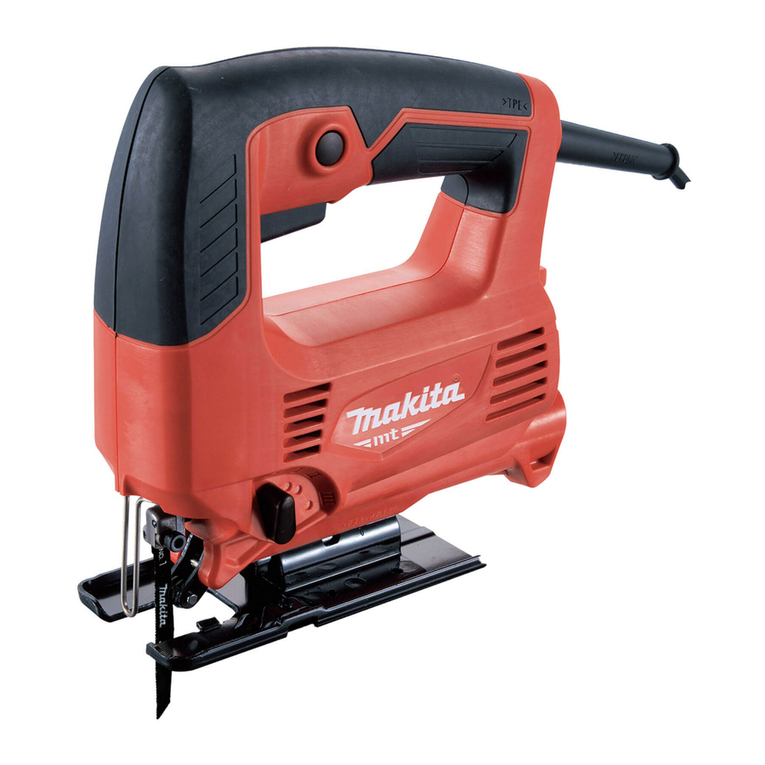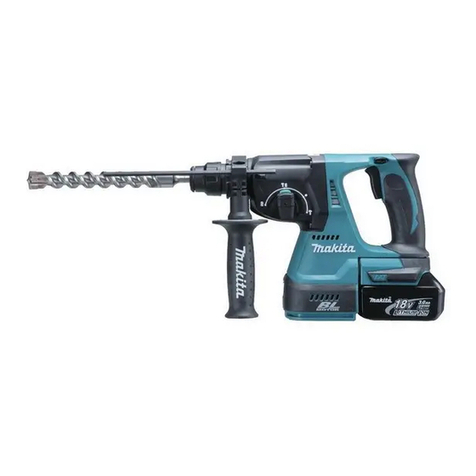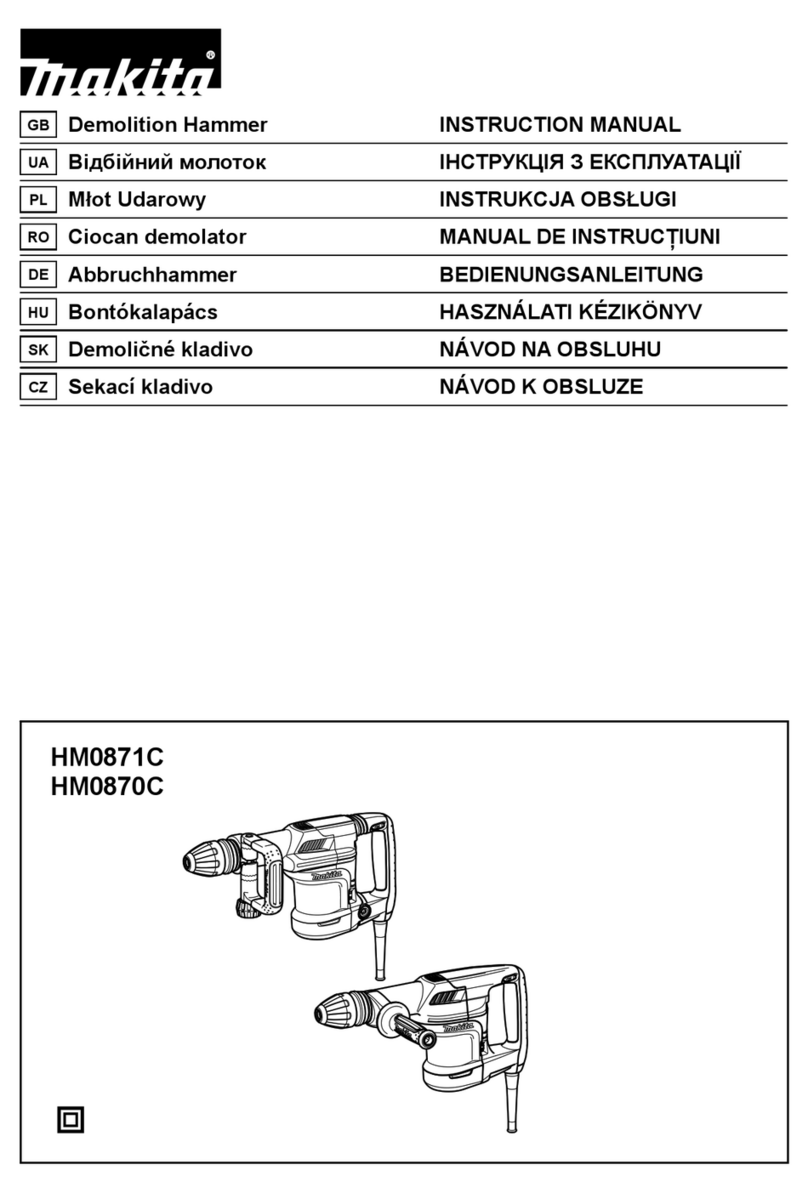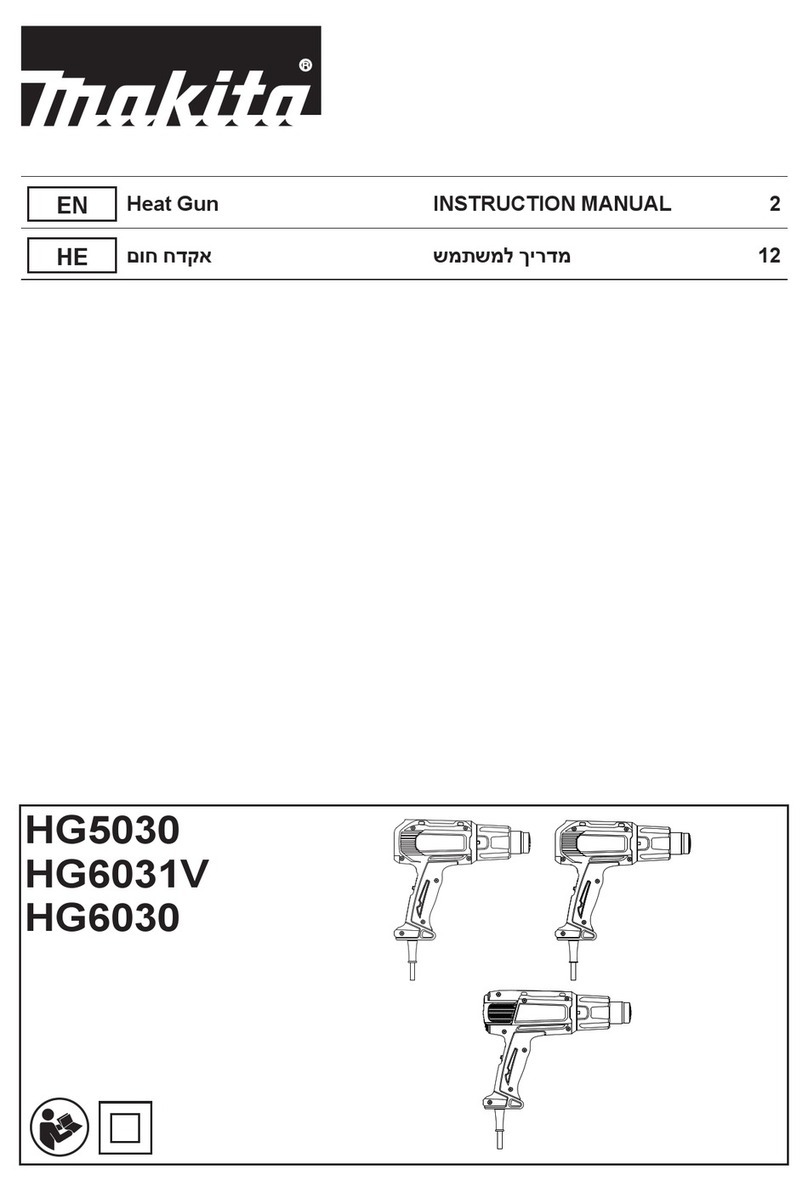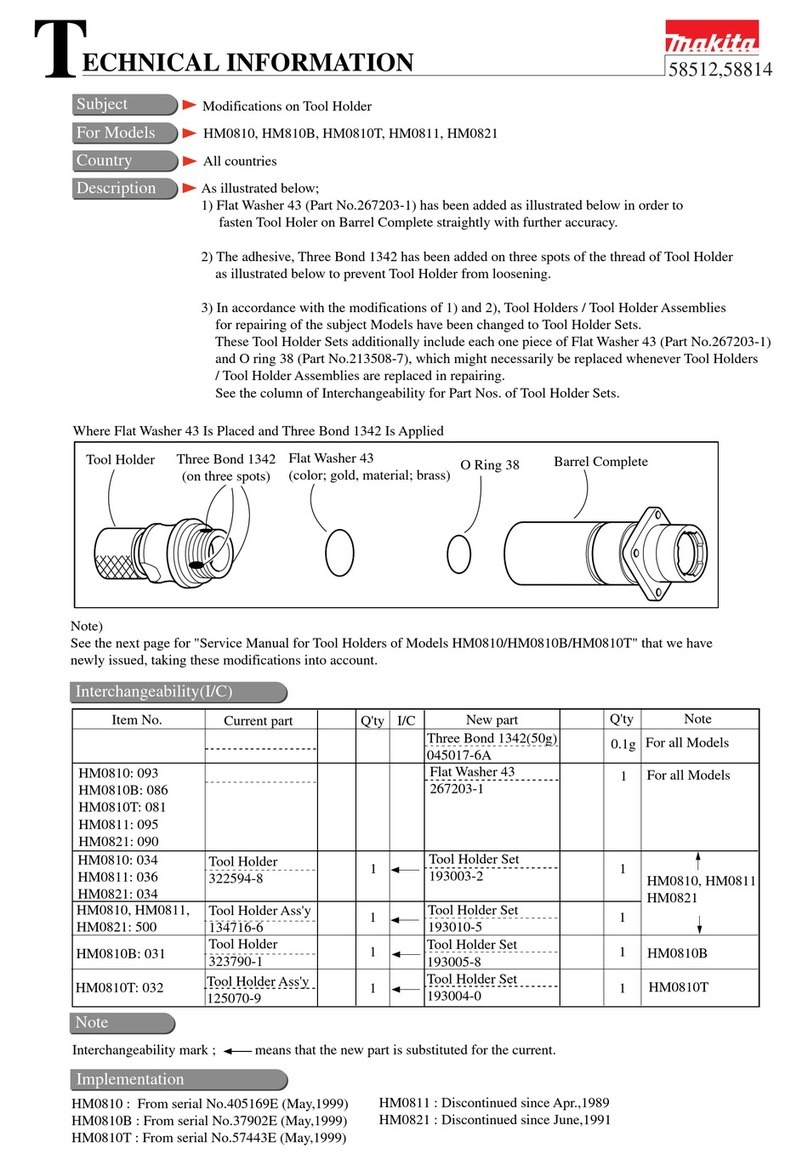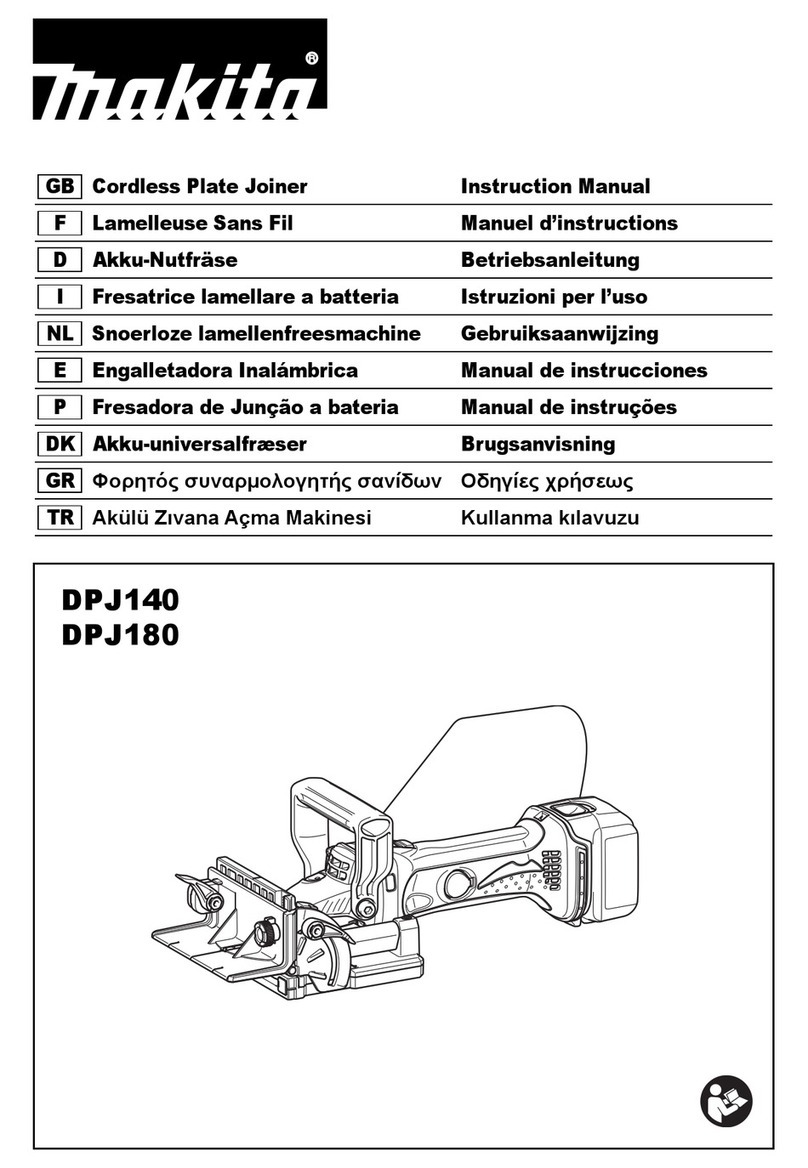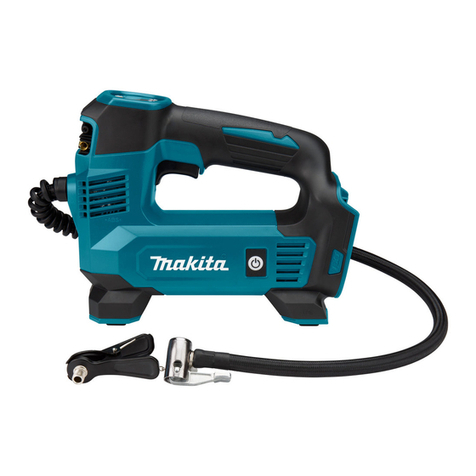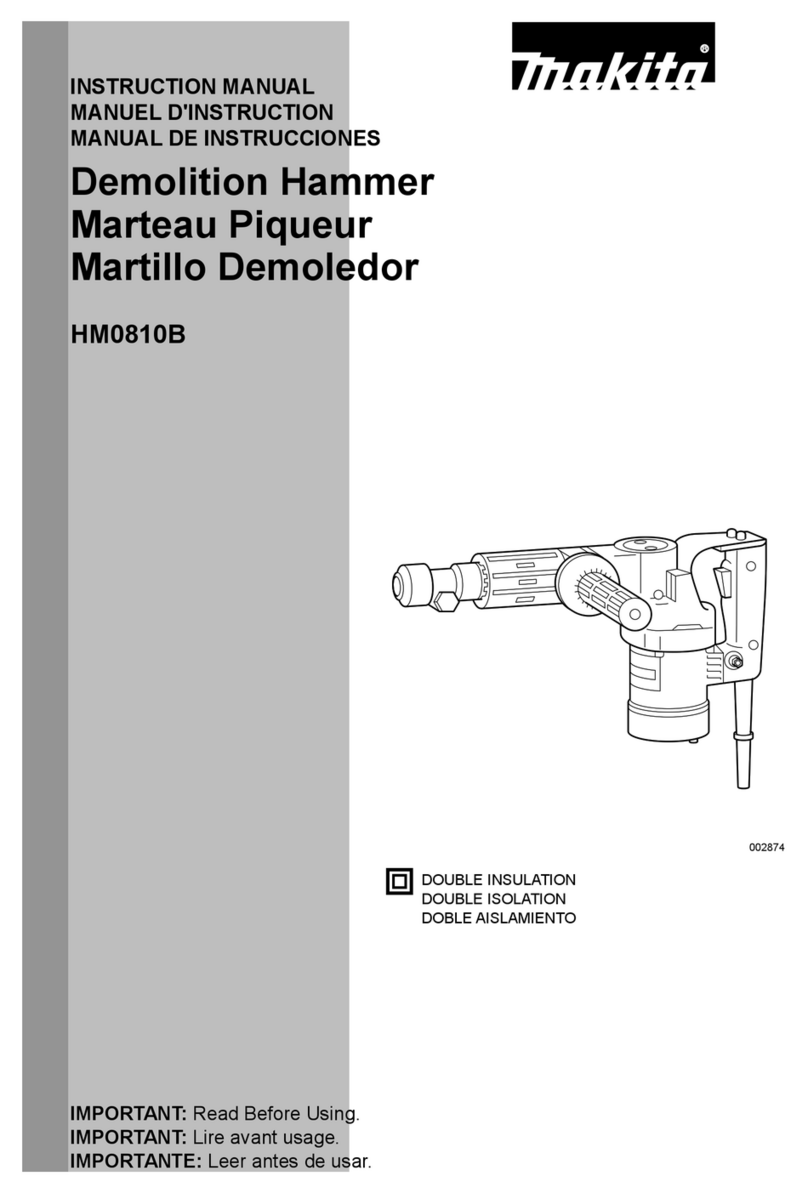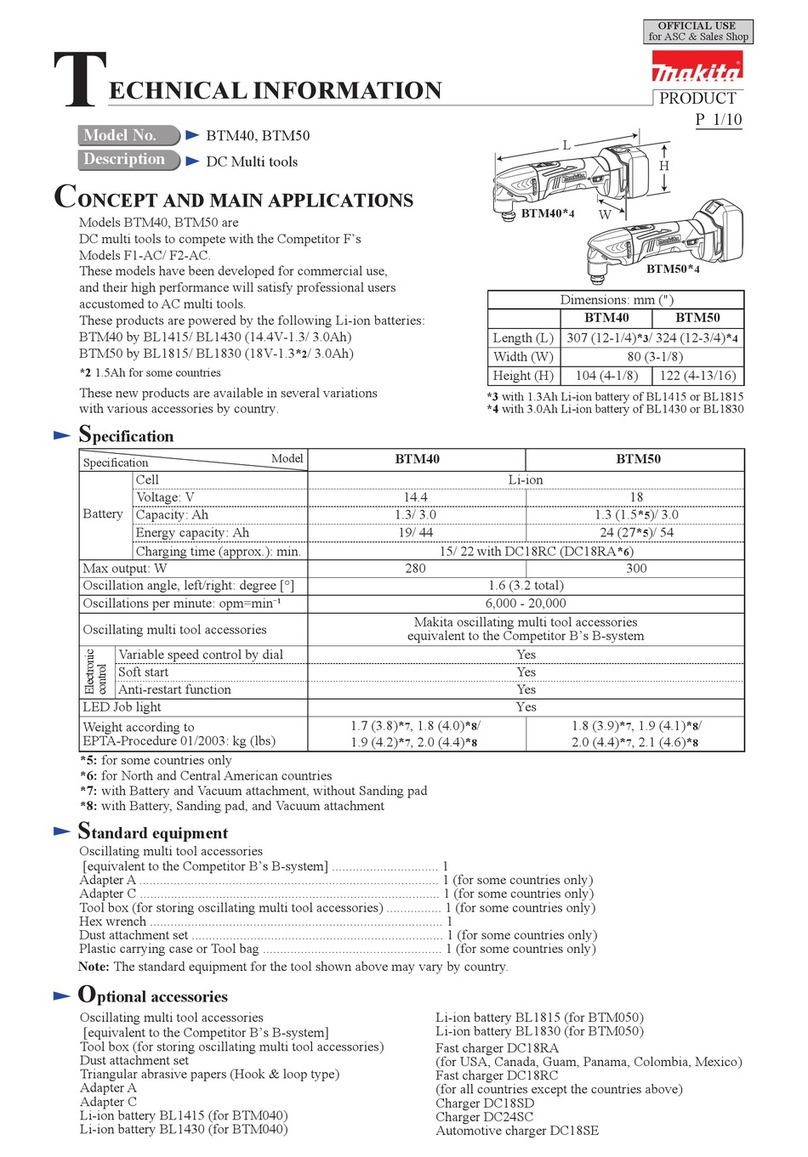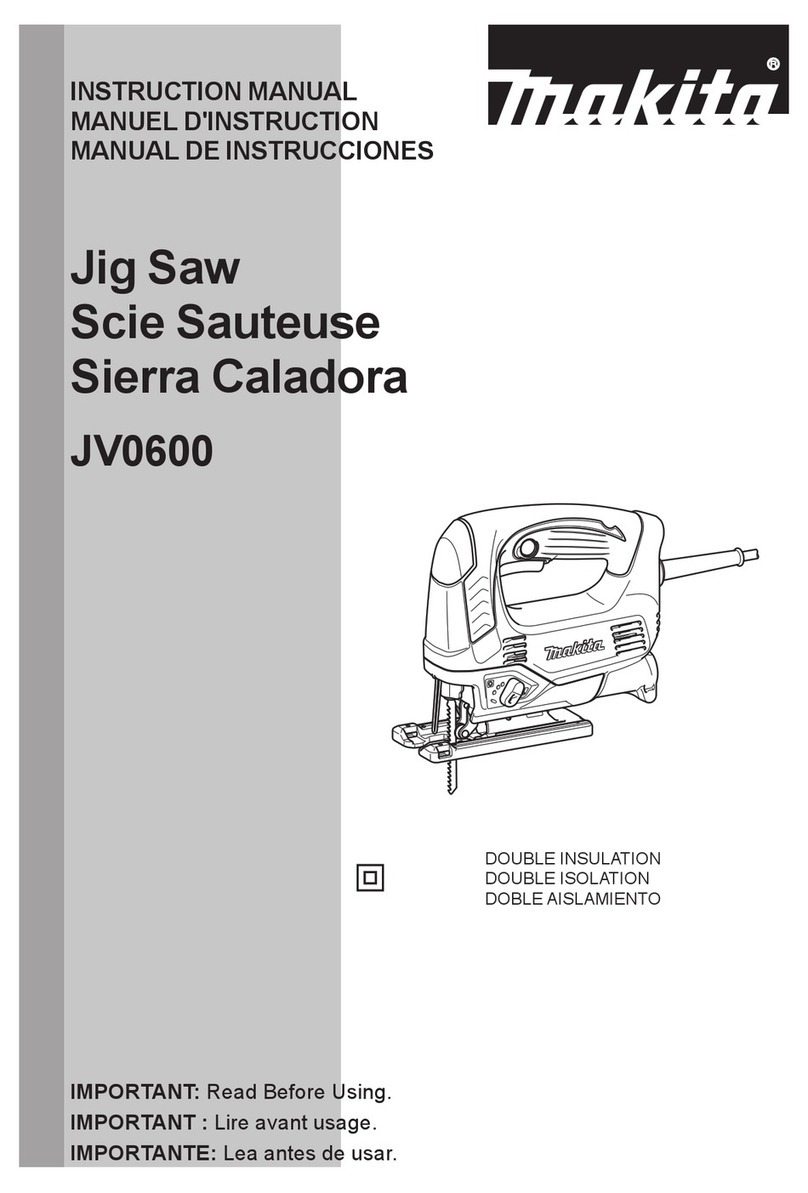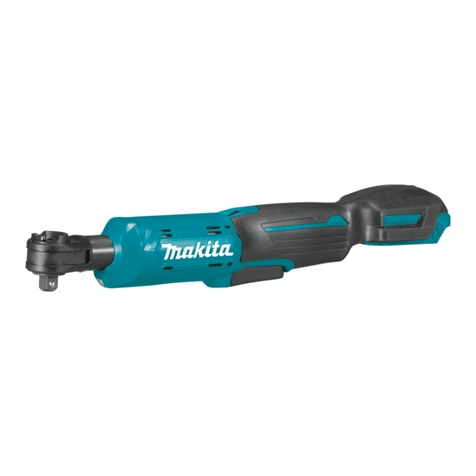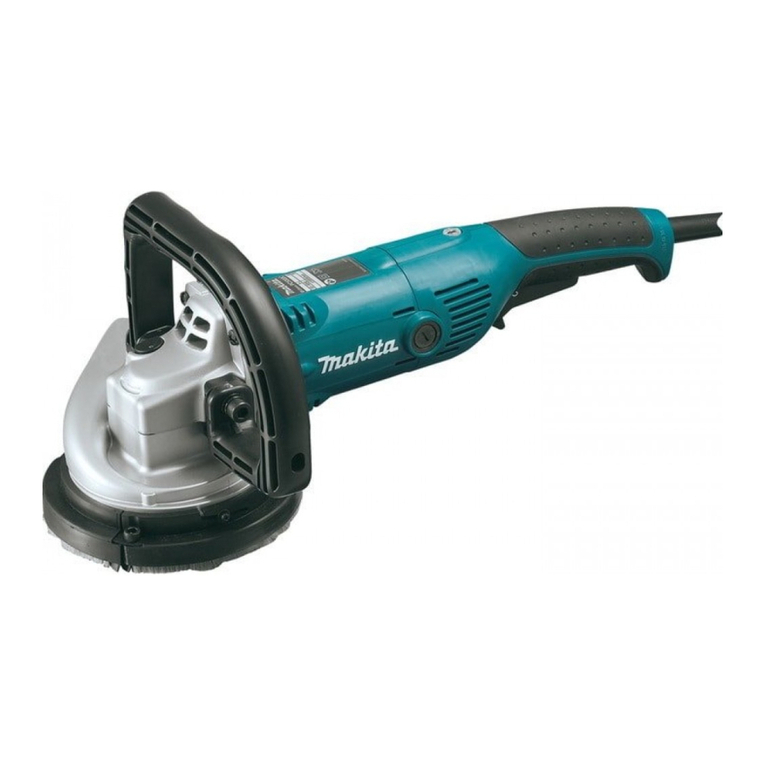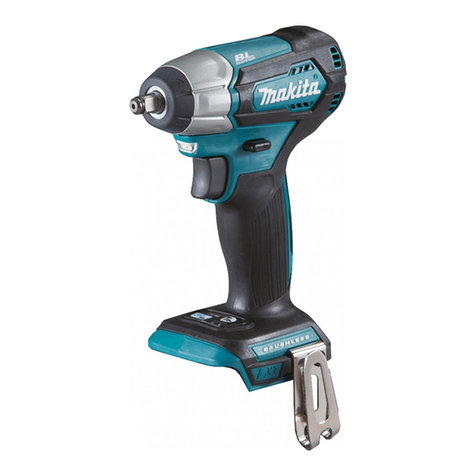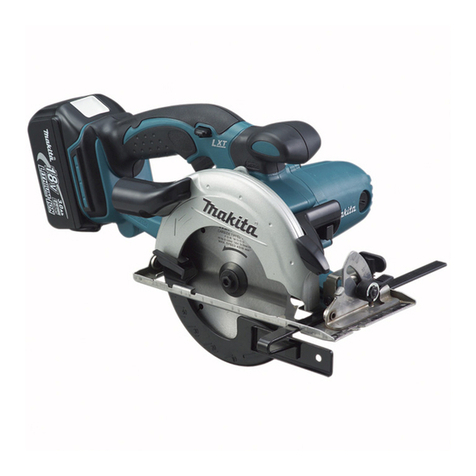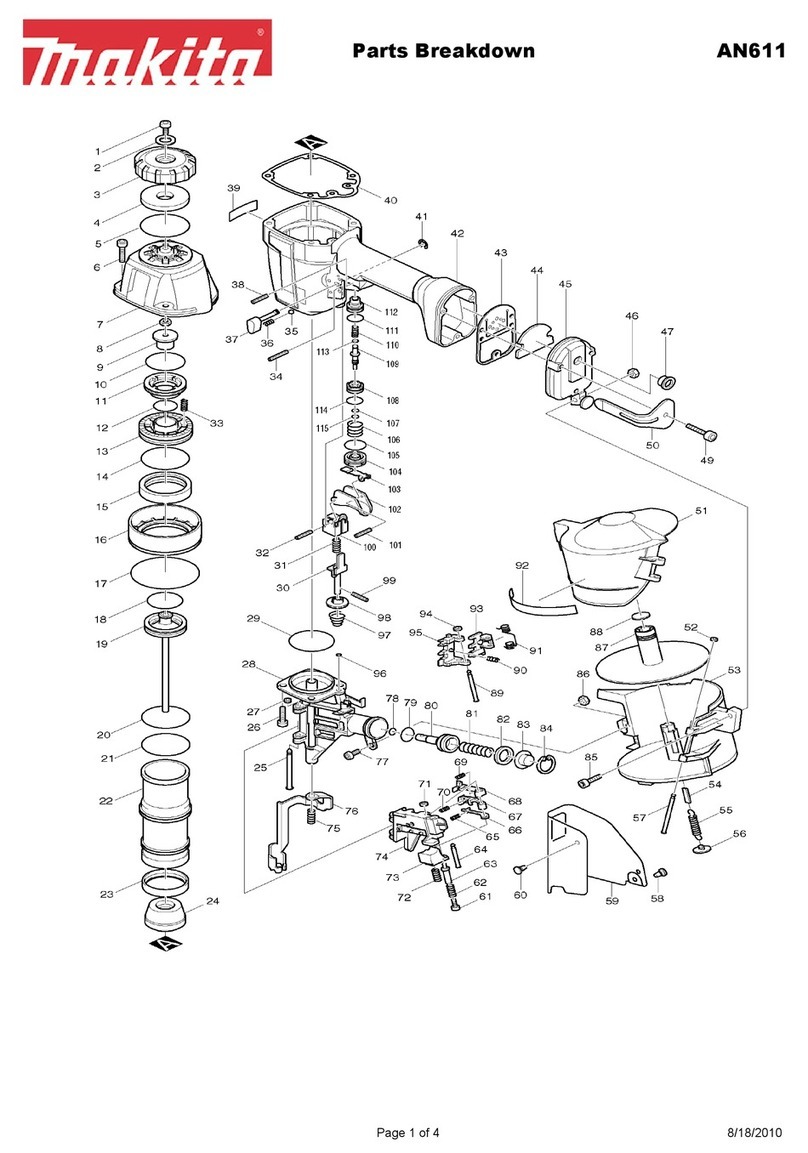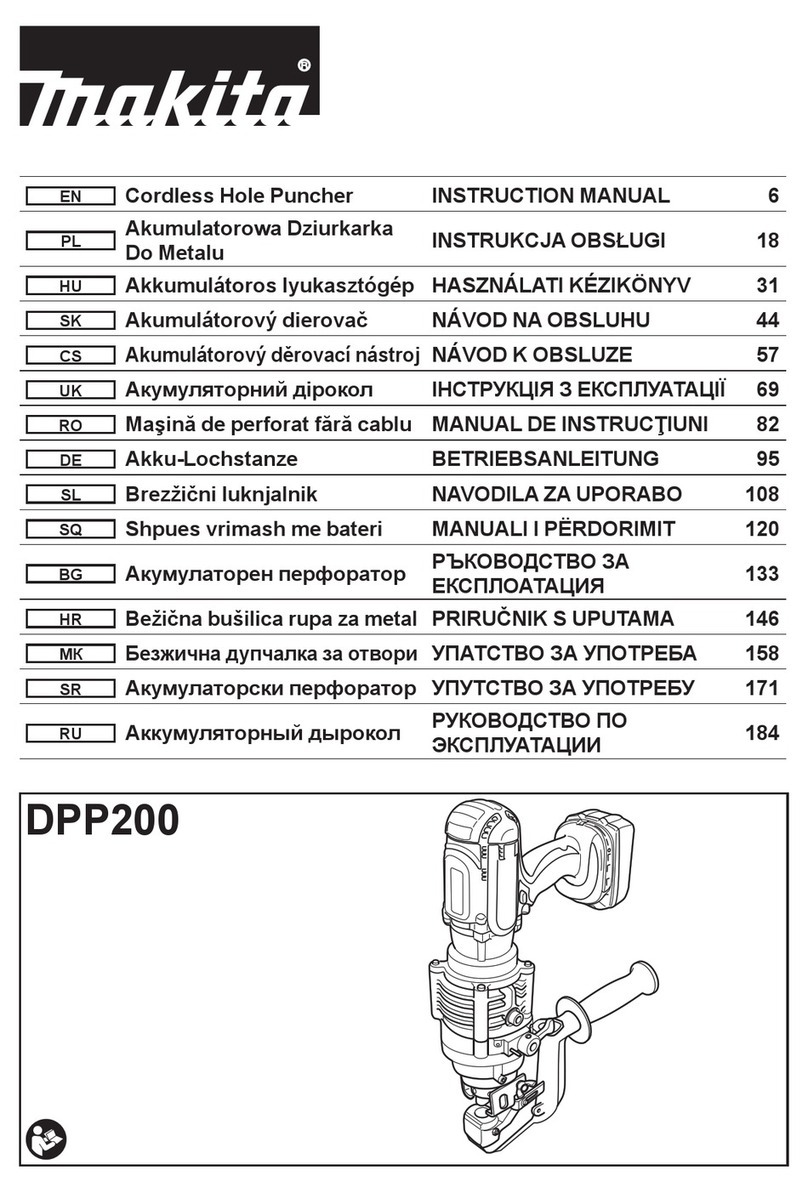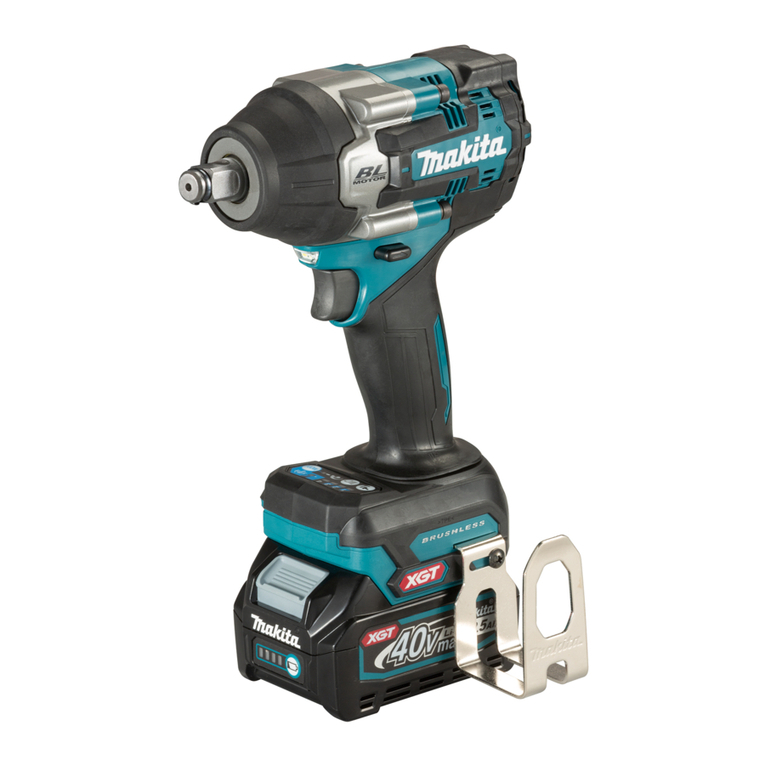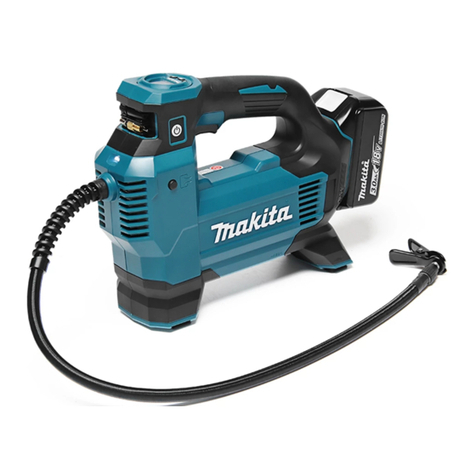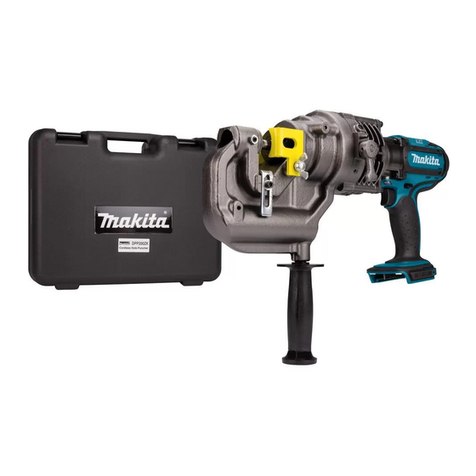
5ENGLISH
WARNING:
The vibration emission during actual
use of the power tool can differ from the declared val-
ue(s) depending on the ways in which the tool is used
especially what kind of workpiece is processed.
WARNING:
Be sure to identify safety measures
to protect the operator that are based on an estima-
tion of exposure in the actual conditions of use (tak-
ing account of all parts of the operating cycle such
as the times when the tool is switched off and when
it is running idle in addition to the trigger time).
EC Declaration of Conformity
For European countries only
The EC declaration of conformity is included as Annex A
to th is instruc tion manual.
SAFETY WARNINGS
General power tool safety warnings
WARNING:
Read all safety warnings, instruc-
tions, illustrations and specications provided with this
power tool. F ailure to f ollow all instruc tions listed below
may result in electric shock, re and/or serious injury.
Save all warnings and instruc-
tions for future reference.
The term power tool in the warnings refers to your mains-oper-
ated (corded) power tool or battery-operated (cordless) power tool.
Cordless impact wrench safety warnings
1 .
Hold the power tool by insulated gripping surfaces,
when performing an operation where the fastener
may contact hidden wiring. F asteners c ontac ting a
live wire may make exposed metal parts of the power
tool " liv e" and c ould giv e th e operator an elec tric sh oc k.
2. Wear ear protectors.
3. Check the impact socket carefully for wear,
cracks or damage before installation.
4 . Hold the tool rmly.
5 . Keep hands away from rotating parts.
6 . Do not touch the impact socket, bolt, nut or the
workpiece immediately after operation. They
may be extremely hot and could burn your skin.
7. Always be sure you have a rm footing.
Be sure no one is below when using the tool in
high locations.
8 . The proper fastening torque may differ
depending upon the kind or size of the bolt.
Check the torque with a torque wrench.
SAVE THESE INSTRUCTIONS.
WARNING:
DO NOT let comfort or familiarity
with product (gained from repeated use) replace strict
adherence to safety rules for the subject product.
MISUSE or failure to follow the safety rules stated in this
instruction manual may cause serious personal injury.
Important safety instructions for
battery cartridge
1 . Before using battery cartridge, read all instruc-
tions and cautionary markings on (1) battery
charger, (2) battery, and (3) product using
battery.
2. Do not disassemble battery cartridge.
3. If operating time has become excessively
shorter, stop operating immediately. It may
result in a risk of overheating, possible burns
and even an explosion.
4 . If electrolyte gets into your eyes, rinse them
out with clear water and seek medical atten-
tion right away. It may result in loss of your
eyesight.
5 . Do not short the battery cartridge:
() Do not touch the terminals with any con-
ductive material.
() Avoid storing battery cartridge in a con-
tainer with other metal objects such as
nails, coins, etc.
() Do not expose battery cartridge to water
or rain.
A battery short can cause a large current
ow, overheating, possible burns and even a
breakdown.
6 . Do not store the tool and battery cartridge in
locations where the temperature may reach or
exceed 50 ° C (122 ° F).
7. Do not incinerate the battery cartridge even if
it is severely damaged or is completely worn
out. The battery cartridge can explode in a re.
8 . Be careful not to drop or strike battery.
. Do not use a damaged battery.
1 0. The contained lithium-ion batteries are subject
to the Dangerous Goods Legislation require-
ments.
For commercial transports e.g. by third parties,
f orw ard ing agents, spec ial req uirement on pac k-
aging and labeling must be observ ed .
F or preparation of th e item being sh ipped , c onsult-
ing an ex pert f or h az ard ous material is req uired .
Please also observe possibly more detailed
national regulations.
T ape or mask of f open c ontac ts and pac k up th e
battery in such a manner that it cannot move
around in th e pac kaging.
1 1 . Follow your local regulations relating to dis-
posal of battery.
1 2. Use the batteries only with the products
specied by Makita. I nstalling th e batteries to
non-compliant products may result in a re, exces-
sive heat, explosion, or leak of electrolyte.
SAVE THESE INSTRUCTIONS.
CAUTION: Only use genuine Makita batteries.
U se of non-genuine Makita batteries, or batteries th at
have been altered, may result in the battery bursting
causing res, personal injury and damage. It will
also void the Makita warranty for the Makita tool and
c h arger.
